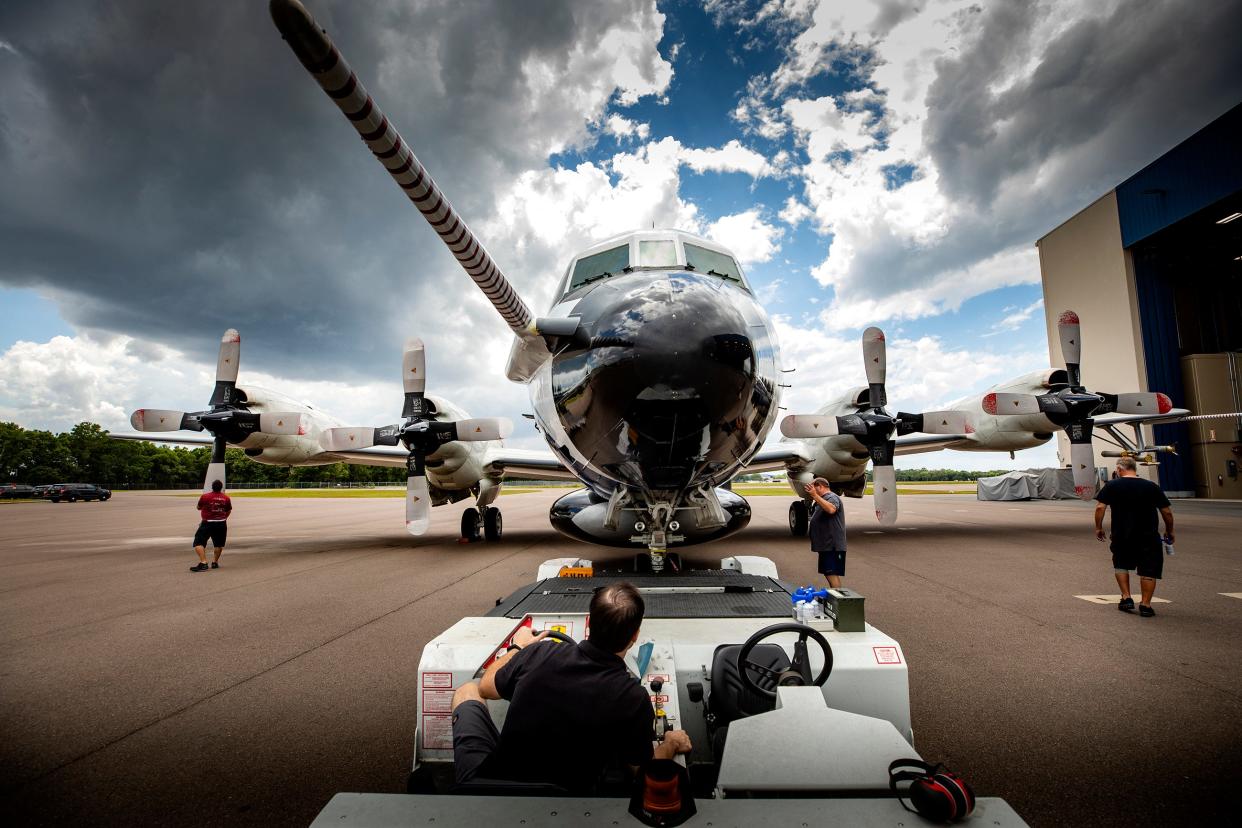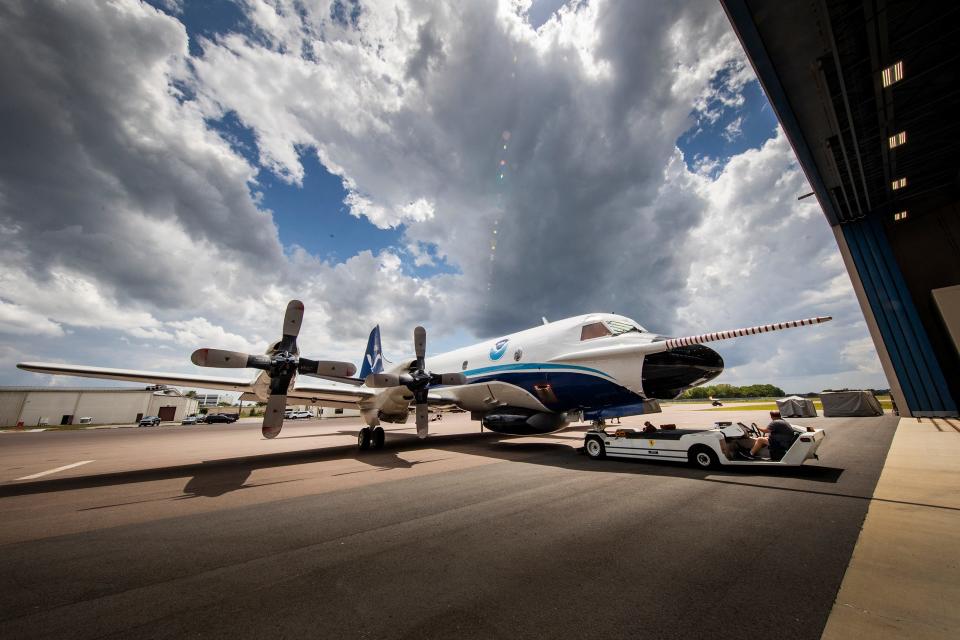ERAU professor has ticket aboard Hurricane Hunter as Ian approaches Florida's Gulf Coast

An Embry-Riddle Aeronautical University professor is going to find himself in the eye of the storm — literally — on Wednesday.
As Hurricane Ian moves north above the Gulf of Mexico toward Florida, Josh Wadler will be aboard the "Hurricane Hunter," NOAA's Lockheed WP-3D Orion aircraft in the interest of science.
Wadler, an assistant professor of meteorology, and his colleagues, mostly NOAA scientists, will be dropping a drone into Ian's powerful winds to capture data to help with future hurricane forecasting.
Shelter From the Storm: Volusia County declares state of emergency, will open shelters as Hurricane Ian approaches
Flood Alert: Hurricane Ian: Forecasters say Volusia, Flagler can expect 'major rainfall flooding'
School Cancellations: Ian causes closures for Volusia, Flagler public schools, colleges
In a phone interview Tuesday, Wadler told The News-Journal he is excited but not fearful of the first deployment of the Altius-600 unmanned aerial system into a live storm.
"Certainly it takes perspective," he said. "We have a lot of respect for the (Hurricane Hunter) crew. They train year round for safety and the flight plans are designed to maximize safety and protect human life. I would say it's safer than being on the ground."
While he's excited, he feels a "mix of emotions," knowing that the storm is life-threatening and brings the potential for great damage.
Wadler anticipates the Altius-6000 will help with pinpointing where the storm's landfall is going to be, and to use that data to help protect people and property. The drone has been built and equipped to fly low, into the boundary layer for long durations during a hurricane.
The boundary layer is of great interest to meteorologists, but it's too dangerous for manned aircraft such as the Hurricane Hunter to fly.

The drone will be able to capture data such as wind direction, atmospheric pressure, temperature, humidity and potential turbulence, he said.
"By dropping the drone in this hurricane, we can use the data to help build better models to predict future hurricanes. Our interest is going and getting data to help our forecasting abilities," Wadler said.
He told ERAU's news and marketing team the data will help meteorologists focus in on forecasting hurricane intensity changes.
“Ian is an especially interesting example of intensity changes: It started as a tropical depression and then rapidly intensified,” he said.
The Altius-600 is built to gather information over a larger area than the current technology, called dropsondes.
Joseph Cione, lead meteorologist for NOAA’s Atlantic Oceanographic and Meteorological Laboratory’s Hurricane Research Division, said in a 2021 news release the dropsondes provide "snapshots" of weather conditions, while the drones will offer a picture that's closer to a movie.
“Deploying the uncrewed aircraft from NOAA Hurricane Hunters will ultimately help us better detect changes in hurricane intensity and overall structure," Cione said. "Ultimately, these new observations could help emergency managers make informed decisions on evacuations before tropical cyclones make landfall.” notes that scientists have long conducted manned reconnaissance of storms through old-school “hurricane hunting.”
Never miss a story: Subscribe to The Daytona Beach News-Journal using the link at the top of the page.
This article originally appeared on The Daytona Beach News-Journal: ERAU meteorology professor will drop drone into Hurricane Ian for data

